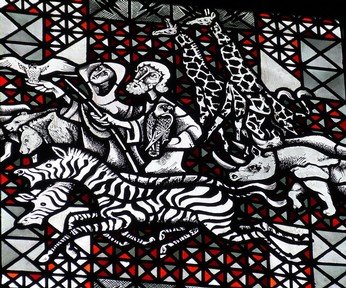Quiz Answer Key and Fun Facts
1. According to Genesis 27:16, what woman put skins of goats on the hands of her son to deceive her husband?
2. According to Genesis 30:25-43, Jacob and Laban had an agreement in which one of them got to keep goats born speckled and spotted and the other got to keep goats born all white. Who got to keep the speckled goats as well as speckled sheep? Was it Jacob or was it Laban?
3. What teenager had his tunic taken from him by his brothers and after they killed a goat they put some of the blood on the tunic? (Genesis 37:31)
4. Scapegoat is a term used in modern English, referring to a person blamed for the mistakes of others. However, the term originated in the Bible with the first reference to scapegoat being found in Leviticus 16:8.
5. What prophet of God had a vision involving a ram and a goat?
6. The following verse is from an Old Testament book: "The lambs will provide your clothing and the goats the price of a field." What book is the verse from?
7. In what Old Testament book do you find details about a man telling a woman her hair is like a flock of goats?
8. Jesus, in the 25th chapter of Matthew, says all nations will be gathered before Him and He will "separate them one from another, as a shepherd divides his sheep from the goats." According to Verse 33, how will the sheep and the goats be separated?
9. A parable of Jesus tells of a son complaining to his father, "these many years I have been serving you; I never transgressed your commandment at any time; and yet you never gave me a young goat, that I might make merry with my friends." What is the name of the parable?
10. The following verse pertaining to Jesus Christ is from Hebrews 9:12 in the NKJV: "Not with the blood of goats and calves, but with His own blood He entered the Most Holy Place once for all, having obtained eternal redemption." Who wrote Hebrews?
Source: Author
Cowrofl
This quiz was reviewed by FunTrivia editor
looney_tunes before going online.
Any errors found in FunTrivia content are routinely corrected through our feedback system.
